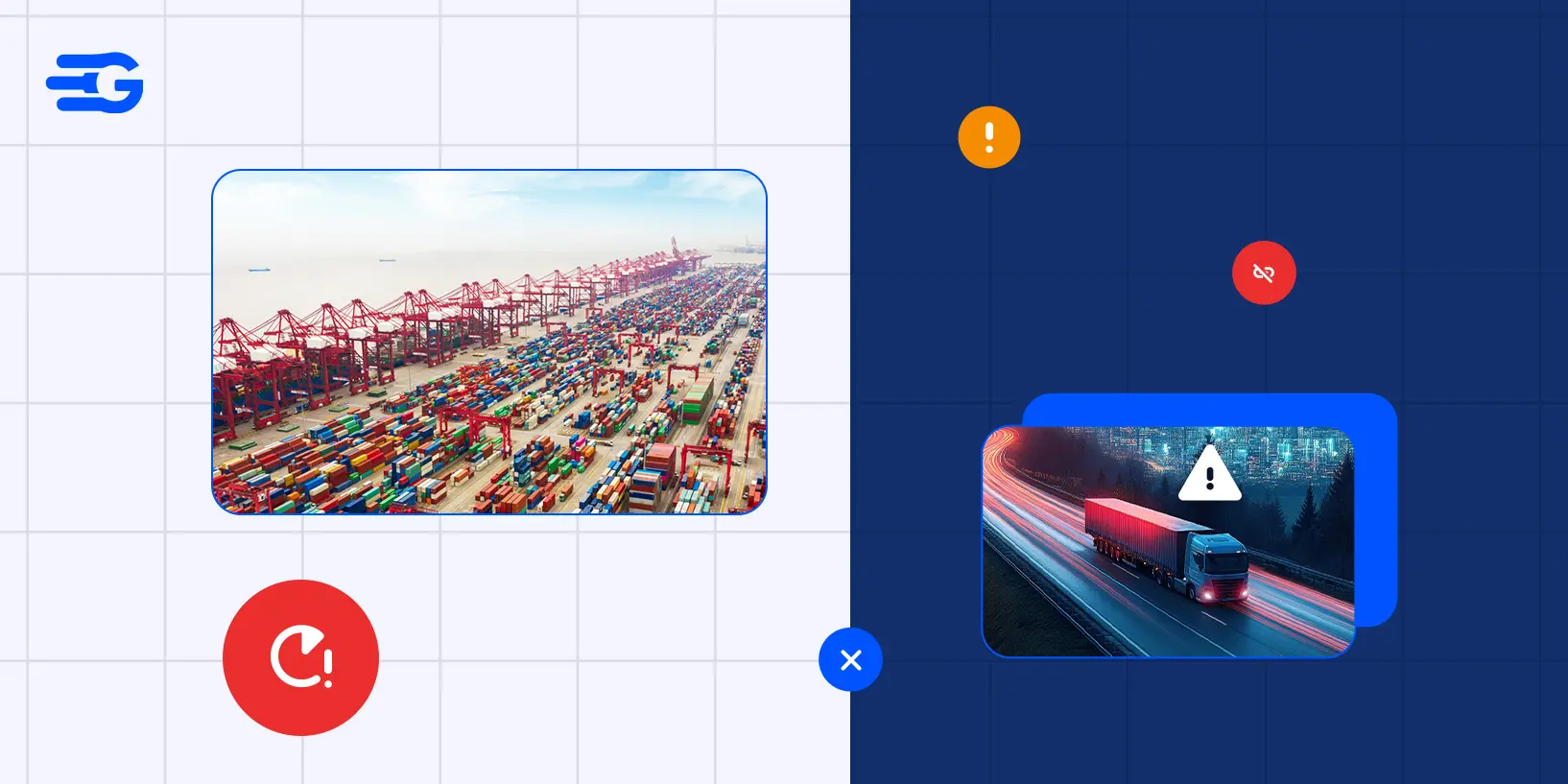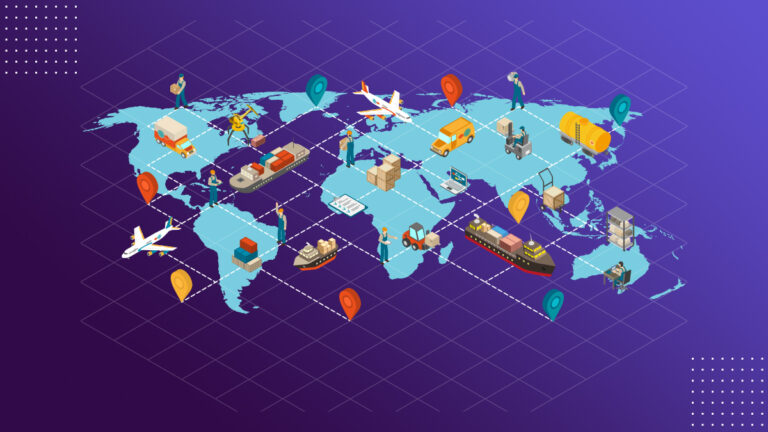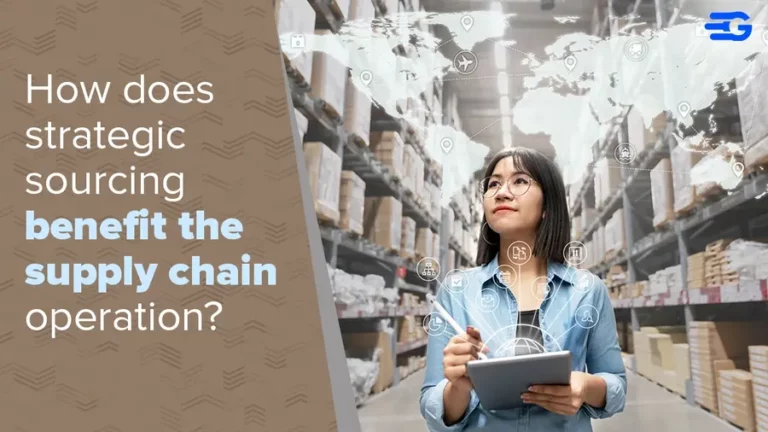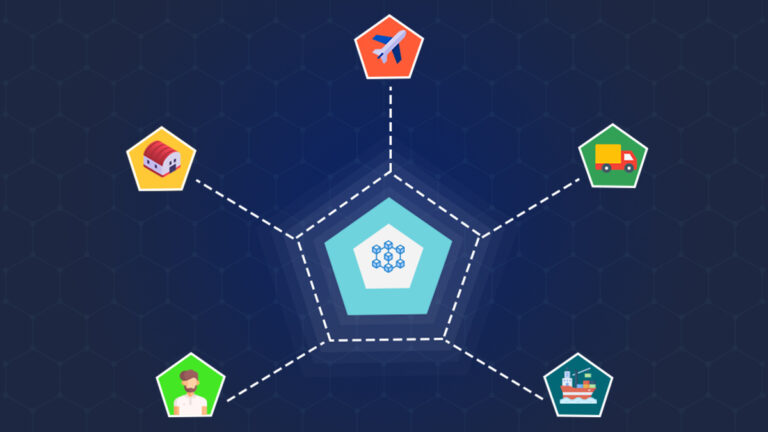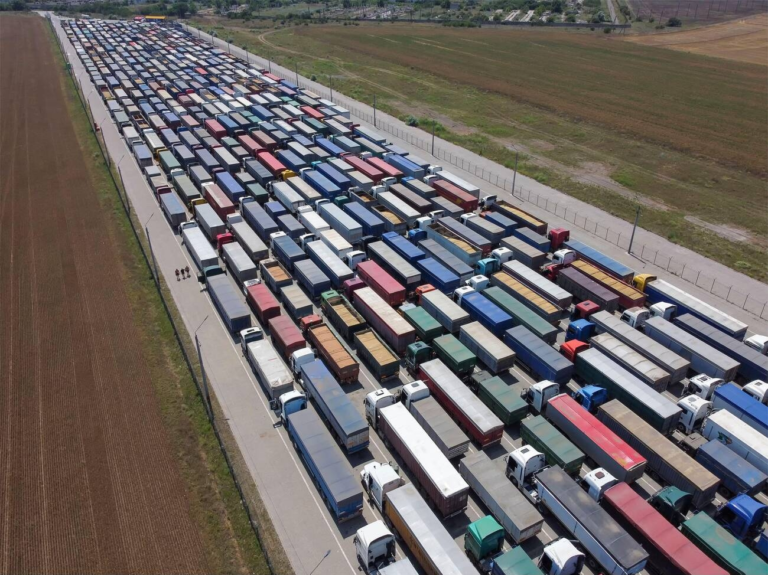15 Supply Chain Challenges in 2025 & Proven Strategies to Overcome Them
Table of Contents
Supply chains power global commerce, but rising costs, geopolitical instability, and other disruptions make efficient management increasingly difficult. In 2025, businesses must stay agile, innovative, and strategic to keep up.
As Gautam Prem Jain, CEO of GoComet, stated at the recent Odyssey Event in Dubai, “Technology needs to be capable enough to tackle supply chain challenges. Companies must connect data and technology effectively to find solutions.” Now in its seventh edition, the event highlighted key global supply chain challenges and the role of technology in solving them.
Following the same aspirations, we will be exploring 5 major supply chain challenges and expert-backed strategies to overcome them.
What Are Supply Chain Challenges?
Supply chain challenges refer to the disruptions and obstacles businesses face in managing the flow of goods, services, and information. These challenges can arise due to factors like material shortages, economic instability, labor gaps, and technological shortcomings. Whether it’s a sudden price hike in raw materials or a natural disaster affecting distribution, businesses need to identify and address these supply chain problems quickly to minimize the impact on operations, costs, and customer satisfaction.
Identifying the Top 15 Supply Chain Challenges
1. Material Shortages
Material shortages remain a major hurdle for manufacturers and distributors. The semiconductor shortage, for example, continues to impact industries from automotive (Toyota, Ford) to consumer electronics (Apple, Samsung). The Russia- Ukraine conflict has also led to disruptions in steel and aluminum supplies, affecting construction and industrial manufacturing.
Example: Apple delayed the launch of the iPhone 14 due to chip shortages, while automakers like Ford had to scale back production.
Solution: Diversify suppliers across regions, foster strong supplier relationships, and maintain safety stocks of critical materials when possible.
2. Freight Rate Volatility
Freight costs have fluctuated unpredictably due to fuel price spikes and shipping disruptions. The Red Sea crisis in 2024 forced major carriers like Maersk and Hapag-Lloyd to reroute shipments, leading to longer transit times and higher costs.
Example: The Panama Canal drought in 2023-24 significantly reduced shipping capacity, causing rate hikes and shipment delays.
Tip: Negotiate long-term contracts with fixed rates, optimize shipment routes, and use freight comparison platforms to find the best rates.
3. Supply Chain Visibility Gaps
A lack of real-time data leads to inefficiencies and costly delays. In 2023, Target and Walmart faced inventory overstock issues due to poor demand forecasting and visibility gaps, resulting in markdowns and profit losses.
Example: Hapag-Lloyd is using IoT-enabled smart containers to enhance shipment tracking, reducing losses and improving efficiency.
Expert Tip: Invest in real-time tracking tools, integrate IoT and ERP systems, and ensure transparency with supply chain partners.
4. Rising Fuel and Energy Costs
With the volatility in global energy markets, rising fuel and energy costs have added a strain on supply chains. These price hikes not only increase transportation expenses but also elevate operational costs across warehouses and production facilities.
Global fuel price fluctuations have strained transportation and operational costs. 2022-2023 saw record-high diesel prices, forcing companies like Amazon and UPS to rethink their logistics strategies.
Solution: DHL has expanded its electric fleet and is investing in sustainable aviation fuel (SAF) to combat rising fuel costs.
Expert Tip: Transition to green logistics and electric fleets, optimize routes with AI tools, and consider renewable energy sources for operations.
5. Geopolitical Instability
Trade wars, sanctions, and conflicts disrupt global supply chains. The U.S.-China trade war has led to tariff hikes on key goods, while sanctions on Russia have affected global energy supplies.
Example: Tesla and Apple have accelerated their supplier diversification efforts, shifting production from China to India and Vietnam to reduce geopolitical risks.
Solution: Diversify sourcing regions and maintain a flexible supply strategy that balances both local and international suppliers.
6. Sustainability and ESG Pressures
In recent years, businesses have faced mounting pressure to meet sustainability goals. In 2024, the market for sustainability platforms reached $1.3 billion, reflecting the increasing emphasis on environmental, social, and governance (ESG) initiatives.
Solution: Work towards sustainable sourcing, implement circular supply chains, and leverage technology to track and manage emissions and waste.
7. Labor Shortages and Skill Gaps
The global labor shortage continues to challenge supply chains, particularly in skilled positions. As of January 2024, 622,000 manufacturing job openings remained unfilled, leading to increased operational costs and delays.
Solution: Adopt automation, AI-driven decision-making, and robotics to streamline processes and fill labor gaps.
8. Cybersecurity Threats
As supply chains become more digital, the risk of cyberattacks grows. Data breaches, ransomware, and phishing attacks can disrupt operations and compromise sensitive information.
Solution: Implement multi-layered security protocols, regularly audit systems for vulnerabilities, and educate employees on security best practices.
9. Climate-Driven Disruptions
Extreme weather events, floods, hurricanes, and rising temperatures are increasingly damaging supply chain infrastructure. These climate-related disruptions are creating significant delays in transportation and production.
Solution: Use predictive analytics to anticipate weather-related disruptions, build climate-resilient infrastructure, and diversify transportation options to minimize delays.
10. Demand Forecasting Complexity
Accurate demand forecasting has always been tricky, but in recent years, unpredictable consumer behavior and market fluctuations have made it even more complex. Inaccurate predictions lead to overstocking or stockouts, affecting profitability.
Solution: Implement AI-driven forecasting models that account for external factors and continuously update predictions in real time.
11. Inflation and Rising Costs
The global inflation rate and rising costs of materials, labor, and energy are putting pressure on companies to maintain profitability while keeping prices competitive.
Solution: Streamline operations, negotiate better supplier rates, and consider dynamic pricing to adjust costs according to market conditions.
12. Digital Transformation Challenges
Many businesses are still grappling with the complexities of digital adoption. Integration issues, resistance from employees, and high costs hinder effective digital transformation, slowing down supply chain operations.
Solution: Choose modular solutions that integrate smoothly, provide thorough employee training, and prioritize interoperability across platforms.
13. Regulatory Compliance Issues
Ever-changing regulations, especially in international trade, can disrupt supply chains. Whether it’s environmental regulations or trade restrictions, staying compliant is an ongoing challenge for many businesses.
Solution: Stay updated on regulatory changes, build flexible processes to adjust quickly, and work closely with compliance experts.
14. Supply Chain Congestion
Port congestion and bottlenecks are still a common issue globally, delaying shipments and causing significant disruptions. Such current supply chain issues often lead to higher shipping costs and delayed delivery times.
Solution: Use digital tools for real-time port congestion data and smart scheduling to optimize delivery routes and avoid bottlenecks.
15. Capacity Limitations in Freight
The limited availability of freight capacity is a growing concern, especially during peak seasons. This challenge has been compounded by the pandemic and a growing demand for e-commerce.
Solution: Build relationships with multiple carriers, optimize load planning, and invest in automated freight-procurement tools to manage capacity constraints.
Strategies to Overcome Supply Chain Challenges
Tackling supply chain challenges head-on isn’t just about responding to disruptions. It’s about proactively building resilience in your operations. To overcome today’s challenges, businesses must adopt a combination of strategic planning, technology, and collaboration. Here’s a breakdown of how to navigate these hurdles effectively:
Strategic Planning and Forecasting
It all starts with proper planning of the supply chain. Businesses need to forecast demand, analyze market trends, and prepare for potential disruptions. Effective forecasting tools, like AI-powered demand prediction, can help anticipate supply chain gaps, allowing you to prepare in advance. Scenario planning is also crucial: simulate various supply chain disruptions (like geopolitical tensions or material shortages) to identify potential risks and develop mitigation strategies.
Adopt Technology to Drive Efficiency
Technology isn’t just a luxury; it’s a necessity. Implementing cloud-based platforms and real-time tracking systems gives businesses instant visibility across their entire supply chain. By using tools like GoTrack, businesses can track shipments in real time, improving transparency and reducing delays. Automated procurement solutions, like GoProcure, help streamline sourcing processes, allowing companies to secure better rates and avoid sudden freight cost spikes.
Additionally, using AI and machine learning to optimize routes, forecast demand, and automate inventory management ensures a seamless flow of goods. These technologies not only improve efficiency but also provide actionable insights that can help businesses make informed, data-driven decisions.
Collaborate with Partners and Suppliers
In today’s interconnected world, no company can manage its supply chain in isolation. Establishing strong partnerships with suppliers, logistics providers, and even competitors can help share risks and optimize resources. For example, shared logistics models allow companies to pool resources with others, cutting costs and reducing the strain on individual supply chains. Open communication, regular updates, and real-time data sharing with partners help prevent bottlenecks and improve overall supply chain coordination.
Diversify and Build Resilience in Sourcing
One of the biggest lessons from recent global disruptions is the importance of diversifying suppliers. Relying on a single source or region for key materials puts companies at risk when disruptions arise. Expanding your supplier network, including regional sourcing, and nearshoring where possible, can help ensure that your supply chain remains resilient. By leveraging a platform like GoProcure, companies can easily access multiple suppliers and manage their contracts effectively to minimize risks.
Invest in Sustainable and Green Logistics
With rising sustainability demands from governments, customers, and investors, companies must integrate eco-friendly practices into their supply chains. This could mean adopting green logistics solutions, such as electric fleets, optimizing routes to reduce emissions, or using sustainable packaging. Investing in sustainability not only helps you meet ESG (Environmental, Social, Governance) goals but also reduces costs in the long run, as energy efficiency and waste reduction can lead to significant savings.
Leverage Data to Drive Continuous Improvement
Data is your most powerful ally when it comes to managing supply chain challenges. By utilizing big data analytics, businesses can monitor performance, identify inefficiencies, and continuously optimize their processes. Investing in tools like GoComet’s real-time tracking helps to collect data on every aspect of the supply chain, from shipments to invoices; allowing for quick identification of potential issues and proactive resolutions.
Focus on Agility and Flexibility
Lastly, one of the key strategies for overcoming supply chain concerns is agility. In a world of constant change, companies must be able to pivot quickly. This could mean adapting to shifts in demand, adjusting logistics to navigate sudden disruptions, or adjusting production schedules on the fly. Building an agile supply chain allows you to respond to challenges swiftly, minimizing their impact.
By embracing these strategies and tools, businesses can transform supply chain challenges into opportunities for growth. Investing in technology, collaboration, and planning today will help ensure that your supply chain is not just resilient but also positioned to thrive in an increasingly complex global landscape.
Final Words
Supply chain difficulties are inevitable, but with the right strategies and technologies in place, businesses can not only overcome these obstacles but also thrive in an increasingly competitive environment. By staying agile and adopting forward-thinking solutions, companies can future-proof their operations and turn these challenges into opportunities for growth.
FAQs
What are the 4 things that can disrupt the supply chain?
The four major supply chain disruptors are material shortages, geopolitical instability, extreme weather events, and transportation bottlenecks. These factors can delay shipments, increase costs, and create operational inefficiencies.
What role does communication play in overcoming supply chain challenges?
Effective communication ensures real-time coordination, transparency, and quick decision-making across stakeholders. It helps mitigate risks, improve responsiveness, and keep supply chains running smoothly, even during disruptions.
